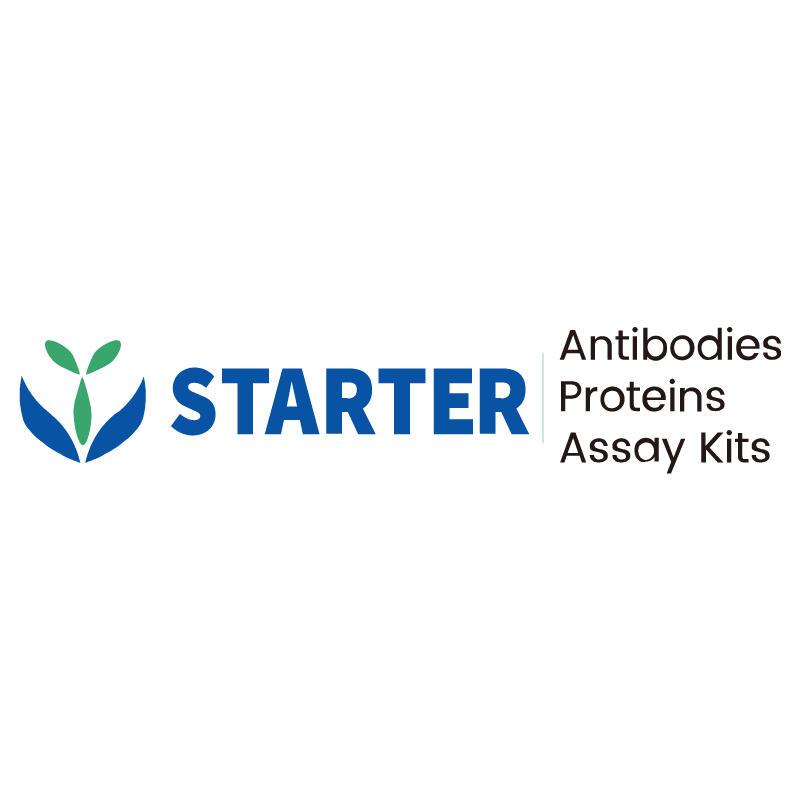WB result of CA2 Rabbit pAb
Primary antibody: CA2 Rabbit pAb at 1/1000 dilution
Lane 1: Caco-2 whole cell lysate 20 µg
Lane 2: MCF7 whole cell lysate 20 µg
Lane 3: A431 whole cell lysate 20 µg
Lane 4: HEK-293 whole cell lysate 20 µg
Secondary antibody: Goat Anti-rabbit IgG, (H+L), HRP conjugated at 1/10000 dilution
Predicted MW: 29 kDa
Observed MW: 35 kDa
Product Details
Product Details
Product Specification
| Host | Rabbit |
| Antigen | CA2 |
| Synonyms | Carbonic anhydrase 2; Carbonate dehydratase II; Carbonic anhydrase C (CAC); Carbonic anhydrase II (CA-II); Cyanamide hydratase CA2 |
| Immunogen | Synthetic Peptide |
| Location | Cytoplasm, Cell membrane |
| Accession | P00918 |
| Antibody Type | Polyclonal antibody |
| Isotype | IgG |
| Application | WB, IHC-P, ICC |
| Reactivity | Hu, Ms, Rt |
| Positive Sample | Caco-2, MCF7, A431, HEK-293, mouse brain, rat brain |
| Purification | Immunogen Affinity |
| Concentration | 0.5 mg/ml |
| Conjugation | Unconjugated |
| Physical Appearance | Liquid |
| Storage Buffer | PBS, 40% Glycerol, 0.05% BSA, 0.03% Proclin 300 |
| Stability & Storage | 12 months from date of receipt / reconstitution, -20 °C as supplied |
Dilution
| application | dilution | species |
| WB | 1:1000 | Hu, Ms, Rt |
| IHC-P | 1:1000 | Hu, Ms, Rt |
| ICC | 1:500 | Hu |
Background
Carbonic anhydrase 2 (CA2) is a zinc-containing metalloenzyme that belongs to the carbonic anhydrase family and plays a crucial role in catalyzing the reversible hydration of carbon dioxide (CO₂) to bicarbonate (HCO₃⁻) and protons (H⁺). This reaction is essential for maintaining pH homeostasis, electrolyte balance, and CO₂ transport in various tissues, including the kidneys, red blood cells, and the central nervous system. CA2 is one of the most efficient enzymes, with a catalytic rate approaching diffusion limits, and its activity is critical for physiological processes such as respiration, bone resorption, renal acid secretion, and cerebrospinal fluid production. Mutations in the CA2 gene can lead to osteopetrosis with renal tubular acidosis and cerebral calcification, highlighting its importance in bone remodeling and acid-base regulation. Additionally, CA2 is implicated in pathological conditions, including cancer, glaucoma, and epilepsy, making it a potential therapeutic target for inhibitors like acetazolamide. Its structure consists of a conserved α-carbonic anhydrase fold with a zinc ion coordinated by three histidine residues in the active site, enabling rapid proton transfer via a water-mediated mechanism.
Picture
Picture
Western Blot
WB result of CA2 Rabbit pAb
Primary antibody: CA2 Rabbit pAb at 1/1000 dilution
Lane 1: mouse brain lysate 20 µg
Secondary antibody: Goat Anti-rabbit IgG, (H+L), HRP conjugated at 1/10000 dilution
Predicted MW: 29 kDa
Observed MW: 35 kDa
WB result of CA2 Rabbit pAb
Primary antibody: CA2 Rabbit pAb at 1/1000 dilution
Lane 1: rat brain lysate 20 µg
Secondary antibody: Goat Anti-rabbit IgG, (H+L), HRP conjugated at 1/10000 dilution
Predicted MW: 29 kDa
Observed MW: 35 kDa
Immunohistochemistry
IHC shows positive staining in paraffin-embedded human colon. Anti-CA2 antibody was used at 1/1000 dilution, followed by a HRP Polymer for Mouse & Rabbit IgG (ready to use). Counterstained with hematoxylin. Heat mediated antigen retrieval with Tris/EDTA buffer pH9.0 was performed before commencing with IHC staining protocol.
IHC shows positive staining in paraffin-embedded human stomach. Anti-CA2 antibody was used at 1/1000 dilution, followed by a HRP Polymer for Mouse & Rabbit IgG (ready to use). Counterstained with hematoxylin. Heat mediated antigen retrieval with Tris/EDTA buffer pH9.0 was performed before commencing with IHC staining protocol.
IHC shows positive staining in paraffin-embedded human gastrointestinal stromal tumor. Anti-CA2 antibody was used at 1/1000 dilution, followed by a HRP Polymer for Mouse & Rabbit IgG (ready to use). Counterstained with hematoxylin. Heat mediated antigen retrieval with Tris/EDTA buffer pH9.0 was performed before commencing with IHC staining protocol.
IHC shows positive staining in paraffin-embedded human colon cancer. Anti-CA2 antibody was used at 1/1000 dilution, followed by a HRP Polymer for Mouse & Rabbit IgG (ready to use). Counterstained with hematoxylin. Heat mediated antigen retrieval with Tris/EDTA buffer pH9.0 was performed before commencing with IHC staining protocol.
IHC shows positive staining in paraffin-embedded human renal clear cell carcinoma. Anti-CA2 antibody was used at 1/1000 dilution, followed by a HRP Polymer for Mouse & Rabbit IgG (ready to use). Counterstained with hematoxylin. Heat mediated antigen retrieval with Tris/EDTA buffer pH9.0 was performed before commencing with IHC staining protocol.
IHC shows positive staining in paraffin-embedded mouse cerebral cortex. Anti-CA2 antibody was used at 1/1000 dilution, followed by a HRP Polymer for Mouse & Rabbit IgG (ready to use). Counterstained with hematoxylin. Heat mediated antigen retrieval with Tris/EDTA buffer pH9.0 was performed before commencing with IHC staining protocol.
IHC shows positive staining in paraffin-embedded rat cerebral cortex. Anti-CA2 antibody was used at 1/1000 dilution, followed by a HRP Polymer for Mouse & Rabbit IgG (ready to use). Counterstained with hematoxylin. Heat mediated antigen retrieval with Tris/EDTA buffer pH9.0 was performed before commencing with IHC staining protocol.
IHC shows positive staining in paraffin-embedded rat kidney. Anti-CA2 antibody was used at 1/1000 dilution, followed by a HRP Polymer for Mouse & Rabbit IgG (ready to use). Counterstained with hematoxylin. Heat mediated antigen retrieval with Tris/EDTA buffer pH9.0 was performed before commencing with IHC staining protocol.
Immunocytochemistry
ICC shows positive staining in MCF7 cells. Anti-CA2 antibody was used at 1/500 dilution (Green) and incubated overnight at 4°C. Goat polyclonal Antibody to Rabbit IgG - H&L (Alexa Fluor® 488) was used as secondary antibody at 1/1000 dilution. The cells were fixed with 100% ice-cold methanol and permeabilized with 0.1% PBS-Triton X-100. Nuclei were counterstained with DAPI (Blue). Counterstain with tubulin (Red).


